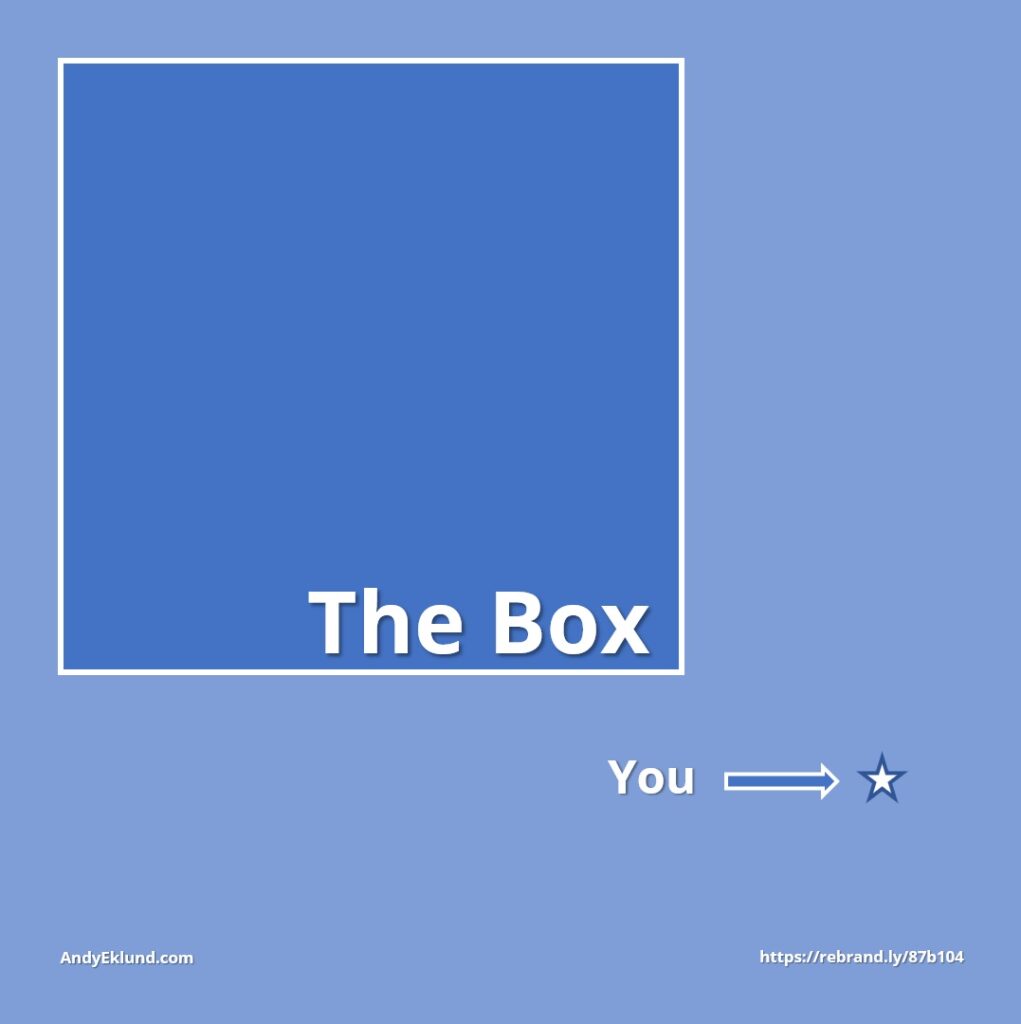Curious about where the phrase out of the box comes from?
There is no singular person who researchers and historians have been able to pin-point definintively as its author. One of the earliest printed phrases – ‘to get outside the nine-dot square’ – was in the newspaper column Viewing TV by Hal Humphrey in November 1959.
The puzzle itself – nine dots in a square pattern of 3×3 – goes back to the late 1800s, appearing more regularly by the turn of the last century as a popular item in newspapers as a brainteaser.
The trick? To draw through all nine dots using four continuous, unbroken lines without lifting the pencil.
But what's 'Outside the Box' mean exactly?
Beyond the puzzle, I’m more taken by what the phrase really means and why. More important, I’m intrigued by its impact on being creative.
Sometime in the mid 1990s, I scribbled poorly hand-written notes saying American industrial psychologist Norman R. F. Maier was also taken with the 9-dot puzzle as part of his research in the 1930s into organisational psychology.
Note: To be clear, my notes say ‘Psychology in Industrial Relations,’ but I’m assuming I meant Psychology in Industry: A Psychological Approach to Industrial Problems (1955), and reprinted as Psychology in Industrial Organizations (1973). I have no access to either book, or real or digital, here in Australia at the moment.
Throughout his career, Maier was always interested in problem-solving and creative thinking. (See the link above for his genius ‘two cords puzzle’ which works along the same pathway as the nine-dot puzzle.)
Adapting the nine-dot puzzle to his research in how employees solved problems, Maier found staff couldn’t solve the riddle.
Hopefully this won’t spoil the answer, but to solve the problem of the puzzle, you have to think outside the ‘visual box’ of the nine dots.
Maier too reasoned employees couldn’t see outside of this visual box. They were using assumptions, limitations and self-restrictions to prevent their own natural problem-solving abilities. Other people since Maier’s research have also come to this same conclusion that people’s creativity is often blinded by their internal thoughts.
This is why I look at out of the box thinking as more than just a generic “think differently!” slogan, or “be original, clever and inventive.“
If you’re going to be an out of the box thinker, you need to:
- Challenge every boundary given to you – from a supervisor, the team, your client, even yourself
- Ask why? and why not? when negative or close-minded people stop or limit your creative thinking
- Push past the vanilla to find the Big Ideas which will change the future
Is 'Inside the Box' Thinking Bad?
A client asked if in the box thinking was bad. Generally no, but.
It depends upon the topic itself and what you’re trying to accomplish. Many professions need consistency more than they need creativity. For example: law, science or accounting (Enron notwithstanding) are built upon repetition, consistency and rigour.
At the same time, don’t expect new outcomes if you only apply the same old thinking to new problems. That was the point behind Einstein’s definition of insanity.
Instead, think of in the box thinking as going by the rules, using existing or standard policies, or following common methodologies. As it’s been said before, only after you know and understand the rules can you break them. Or, in other words, to think out of the box.
Perhaps most important, if you’re going to ask someone else to think out of the box, then you too must think beyond your own assumptions as well.
Otherwise, it’s a pointless exercise for everyone involved.
Figured out the answer?
If you’re a smart cookie and can solve the nine-dot puzzle, put your genius to work on this variation of the old puzzle.
Try thinking outside of the triangle.
Can you create four triangles from six lines of any length? Unlike its nine-dot cousin, the lines here don’t have to be continuous.

If you don’t know the answers to either puzzle, go here.
What are you experiences with out of the box thinking? Feel free to add your thoughts and comments below.



No comment yet, add your voice below!